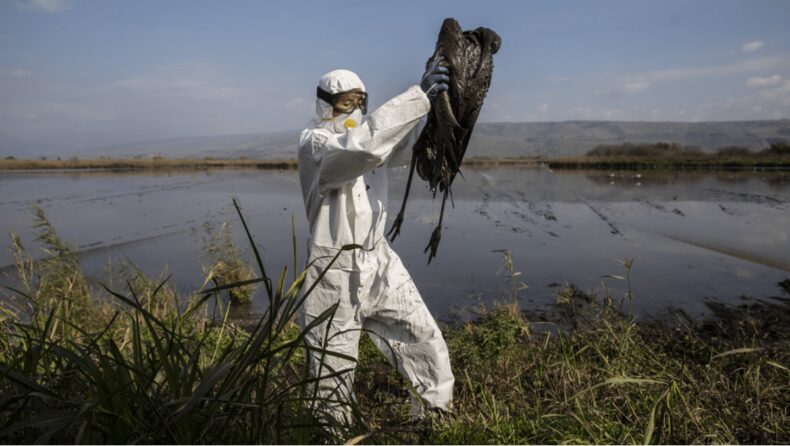A huge number of poultry farms in Europe and the UK have been ravaged by avian flu this year. Not just poultry, but the wild birds, as well as bird conservatories all over Europe, witnessed a massive number of dead birds affected by the disease.
Bird flu has never been worse in Europe as of now. On top of covid-19 and influenza, epidemics have been piling on the west one after another. And it seems it’s the turn of the birds and beasts this time.
Carcasses of dead birds, people wearing white suits, that remind us of our own tragic days with covid, and hauling the dead poultry out of the farms are becoming a common sight all across Europe.
According to the reports of Christina Strunck, the Netherlands suffered a great deal as they have a high number of poultry farms all over. The new epidemic is slowly becoming the new norm of the people.
Poultry farmers had to endure a heavy loss of their major income in the aftermath of the bird flu. The farmers are required to clean and disinfect their now empty barns and cull the remaining birds to ensure the epidemic doesn’t spread further.
The bird flu season stretches its wings

Bird flu is not something new to Europeans. The flu season usually occurs around October and lasts till April or May. Though this year it has exceeded all its limits and has extended for more than a year.
The European Food Safety Authority (EFSA), bird conservationists, and farmers together have declared the bird flu of this season as exceptional. Over 4 million ducks and chickens had to be culled in the Netherlands itself while the death of wild birds rose to the thousands.
Almost every European country has reported at least one such case of bird flu since the beginning of October 2021. EFSA’s latest reports show that a colony of breeding wild birds on the northwestern coasts of Europe is also affected by the epidemic.
One of the leading factors that result in the faster advancement of the virus is the high poultry density which comes from the migratory wild birds traveling via Asia to spend the winter in Europe.
When the time comes for the birds to leave in April, generally the virus also leaves with them. Apparently, they decided to stay this year. The most affected species of birds in the Netherlands is the waterfowl.
Among all the other countries in Europe, the Netherlands has the highest density of poultry farms. There have been reports of a new outbreak of the epidemic being registered in the US too.
The main determinants of the epidemics are the feathers of infected birds carried by the wind, bird droppings that comes to contact with mice and other animals, etc. Even though high-end measures for hygiene were introduced the governments are still unable to put an end to the virus completely.
Quarantine for the Fowls
A quarantine has been placed for the farm birds from October to July which prohibits the chickens from going outside. The farmers have even established a 3-kilometer-wide protection zone to prove that their farms do not contain any bird flu.
The birds at the affected farms have all been culled as the virus is highly infectious and kills faster. This summer alone more than 40 million birds have been culled. Experts warn that the bird flu might get worse coming winter.
“We have done everything we could so that the virus stays outside our farms,” said Bart Jan Oplaat, chairman of the Dutch Union of poultry farmers. The rules are similar in France, the second largest poultry producer in the EU.
Read more: New diseases that could be the next pandemic













